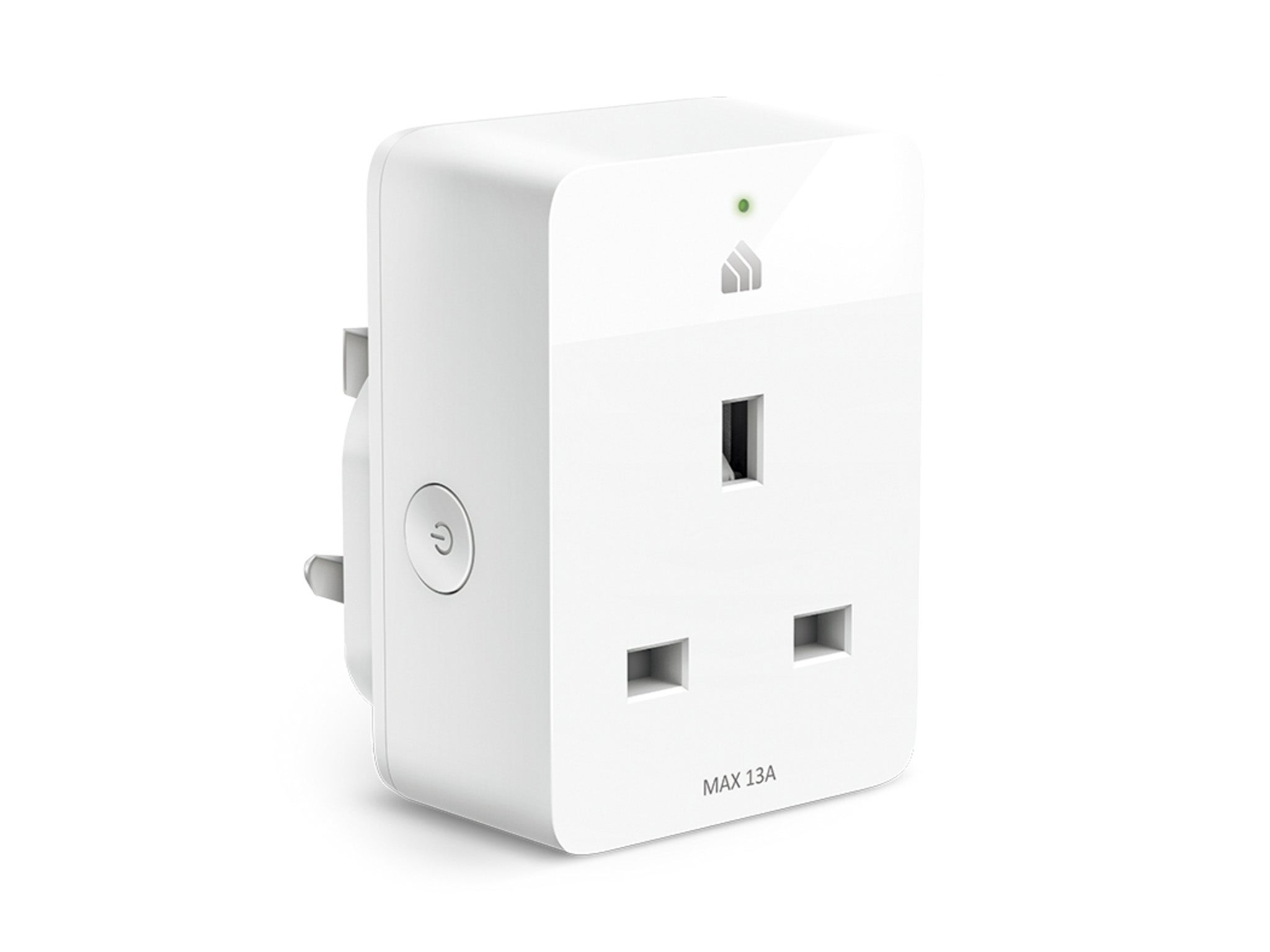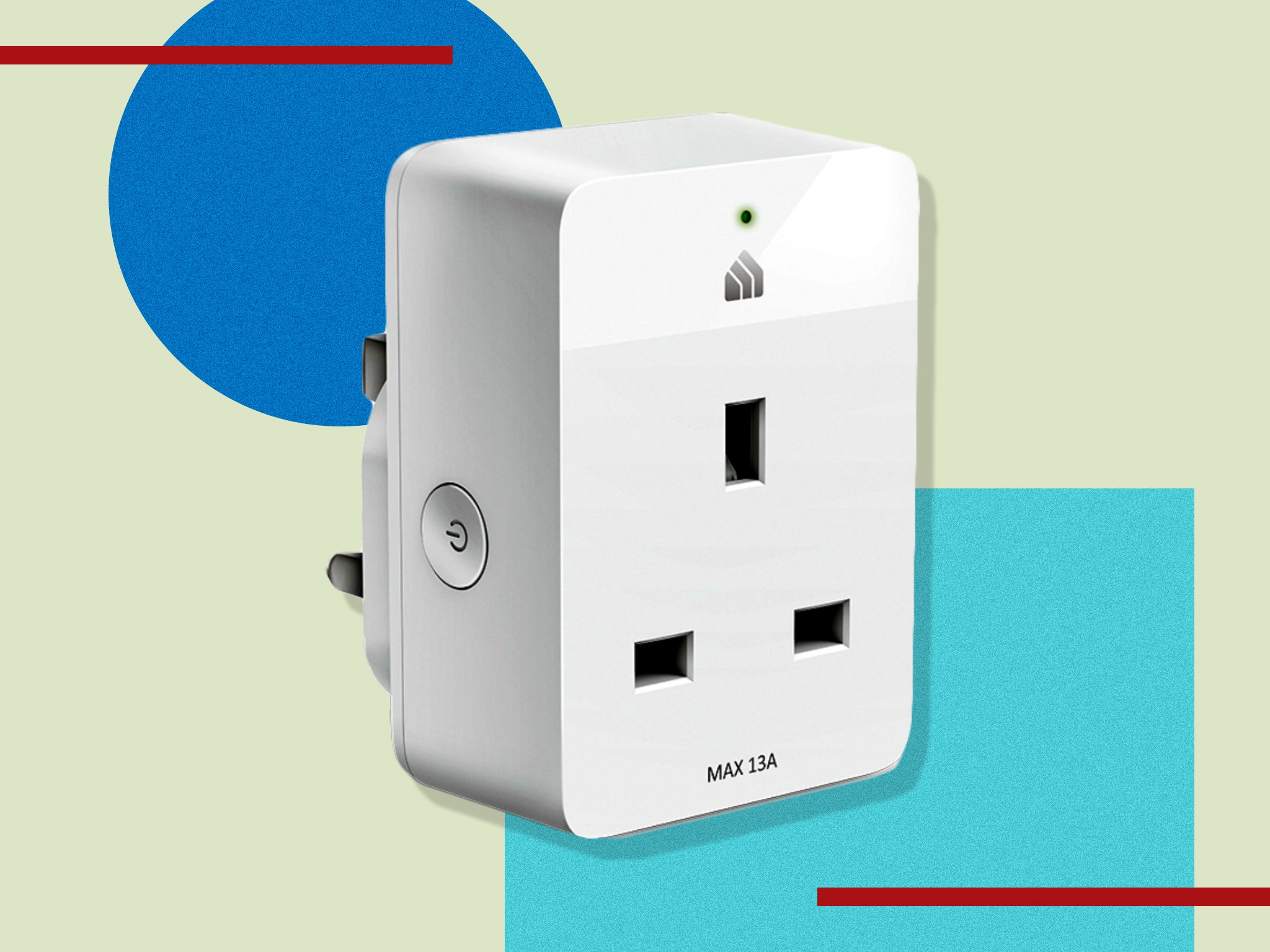TP-Link Kasa smart wifi plug slim

- System requirements: iOS 10 or higher, Android 5.0 or higher
- Dimensions: 72.5mm x 51.5mm x 37.5mm
- Weight: 90g
- Maximum load: 13 A, 2.99 KW for 230V
- Compatibility: Alexa, Google Assistant, Samsung SmartThings
Smart plugs all look pretty much the same, and this model from TP-Link does little to stand out in this respect. That’s no bad thing, of course – we’re not exactly champing at the bit for a crazy redesign of a simple plug.
However, it’s worth noting that this model is smaller than some others, especially when compared to early examples from TP-Link’s own Kasa range. There’s a small status light on the front to let you know when the plug is on, off or has a connection issue, and there’s a button on the side for manually turning it on and off.
Like others, this plug emits a noticeable clicking noise when switched on or off, helping to confirm when it has responded to an app or voice-assistant command. This is particularly useful when the plug is out of sight, such as under a desk or behind furniture.
The only negative, in terms of design and hardware, is how it blocks space to the adjacent socket when attached to a multi-socket extension cable. This is a little frustrating, especially given the ‘slim’ bit of the name, and means it takes up two of the six sockets in our extension cable.
Software and setupWe already have a couple of other Kasa smart plugs, so setting up this plug was simply a case of opening the app, tapping the plus icon to add a new device, plugging it into a wall outlet and following the app’s instructions. In all, it took under five minutes to add the plug to our wifi network and Kasa system, then give it a name and assign it an icon.
Read more: The best smart plugs to save on energy bills
If you’re new to TP-Link and Kasa, you’ll need to set up a Kasa account first, which requires your email address. It still only takes a few minutes to create an account, and from there it’s easy to add more Kasa products, such as video doorbells, security cameras, light bulbs, switches and sensors.
The app can also be used to gather devices into groups – one per home or per room, for example – so they can all be controlled at once. You can also create scenes that set your lights and plugs to a user-defined setting with a single tap, and there are also ‘smart actions’. These work like ‘routines’ in the Alexa app, and provide a way to create recipes where Kasa devices perform certain actions based on external factors, like a movement sensor being triggered, or it being a certain time of day.
Lastly, there is a scheduling system for setting the switch to turn on and off on a personalised daily or weekly routine. It’s all quite self-explanatory and we think the app is neatly laid out – perfect for users who might be new to smart home equipment and automation systems.
Energy monitoringNow to the real reason we’re reviewing this smart plug – its ability to monitor and record your energy usage. Given the soaring cost of energy, it’s crucial to know how much your appliances are consuming.
We think such a feature is best used with an electric heater, as these can be more cost-effective when heating a single room of your home, compared to central heating, which is a better way of warming multiple rooms at once. If you work from home, an electric heater under your desk can be a great way to keep warm without needlessly using the radiators in other rooms.
Read more: An expert-led guide to energy-efficient kitchen appliances
But how much does that heater cost? The Kasa app shows how many watts the plug is supplying at any moment, and the total amount of energy, measured in kilowatt hours, or kWh, consumed during the current day. It also shows the average consumption over a seven and 30-day period.
We’d forgotten how powerful our electric heater was, so plugging it in to the Kasa and looking at the live wattage stat was an easy way to find out. After a minute of experimenting, we learnt that the heater draws 800W, 1,200W or 2,000W, depending on which of the three power settings is used. We also discovered how using the heater’s integrated fan increases the power draw by just 20W.
The app also shows how long the plug has been active, in hours and minutes, during the last day, week and month.
Read more: Save money on your energy bills with smart home devices
Now add the cost of electricity, which currently stands at 34p per kWh, as per the most recent Ofgem price cap, and you can see exactly how much it costs to run whatever’s attached to the smart plug. In our case, we ran the heater for 45 minutes on the day of writing this article, which consumed 0.37kWh of electricity. Multiplied by the current price cap and we come to a cost of about 12p.
Naturally, this will vary depending on the power of your heater and future price caps.
Smart home integrationOne final trick up the sleeve of the Kasa plug is smart home integration. It offers support for Google Home, Alexa and Samsung SmartThings, so you can use your smart home automation platform (or voice assistant) of choice to switch the plug on or off.
Apple’s HomeKit platform and Siri voice assistant are unfortunately missing, so if you have a smart home tightly integrated with Apple’s system you’ll want to look elsewhere, or stick with TP-Link’s own Kasa app for controlling the plug and monitoring energy usage.
Want to know more? Check out our guide to the best smart plugs for automating your home

